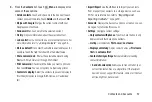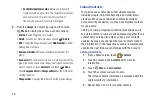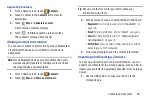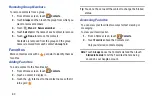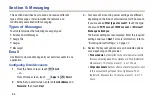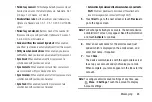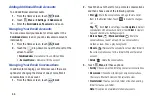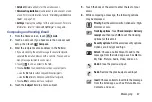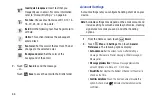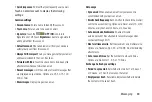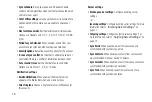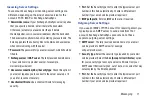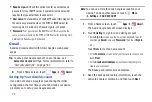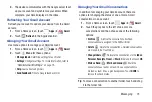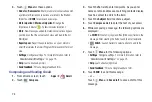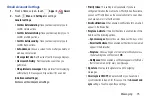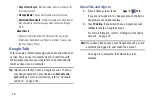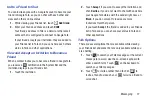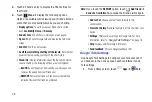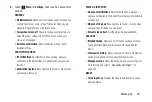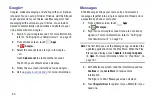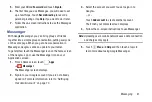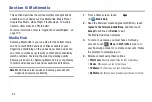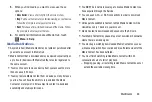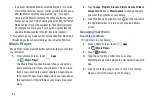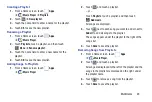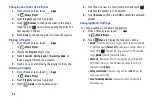
Messaging 71
Incoming Server Settings
Your account’s exchange or incoming server settings are
different, depending on the kind of email service for the
account: POP3, IMAP, or Exchange ActiveSync.
•
Domain\ User name
: If your Exchange ActiveSync server requires
that you specify a domain, enter it before the backslash.
Otherwise, just enter your username (the part before
@emailprovider.com in your email address) after the backslash.
The backslash is optional when only entering your username. The
Email app enters the correct syntax for domains and usernames
when communicating with the server.
•
Password
: The password for your email account, which should be
filled in.
•
Exchange server / IMAP server
: The fully resolved domain name
of your email service provider’s server, for example,
mail.emailprovider.com.
•
Use secure connection (SSL) / Security type
: Check this option if
your server requires you to connect to the server securely, or if
you prefer to connect securely.
•
Use client certificate
: Use a client certificate for messaging
security.
•
Port
: Set the Security type first to enter the typical server port
number in this field automatically. Or enter a different port
number if your email service provider requires it.
•
IMAP path prefix
: Enter an IMAP path prefix, if required.
Outgoing Server Settings
If you use an IMAP or POP3 account for receiving email, you
typically use an SMTP server to send email from that
account. Exchange ActiveSync accounts do not have
separate outgoing server settings.
•
SMTP server
: The fully resolved domain name of your email
service provider’s SMTP server, for example,
smtp.emprovider.com.
•
Security type
: Select the security type required by your email
service provider. Select the
SLL (Accept all certificates)
option
for your security type to accept a server certificate from your
SMTP server that is self-signed, out of date, or in some other way
not accepted by the Email application.
•
Port
: Set the Security type first to enter the typical server port
number in this field automatically. Or enter a different port
number if your email service provider requires it.

